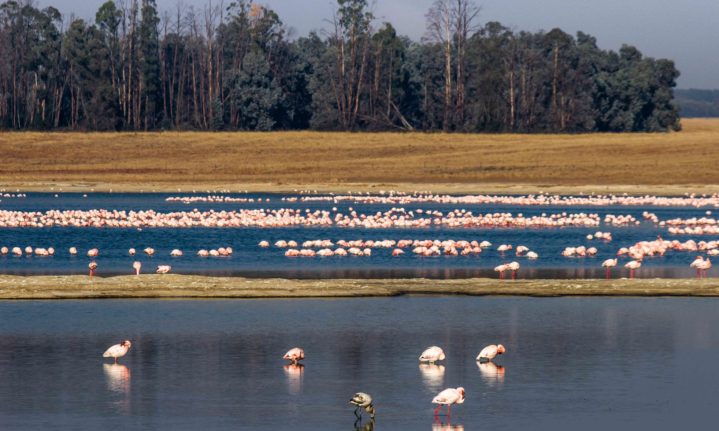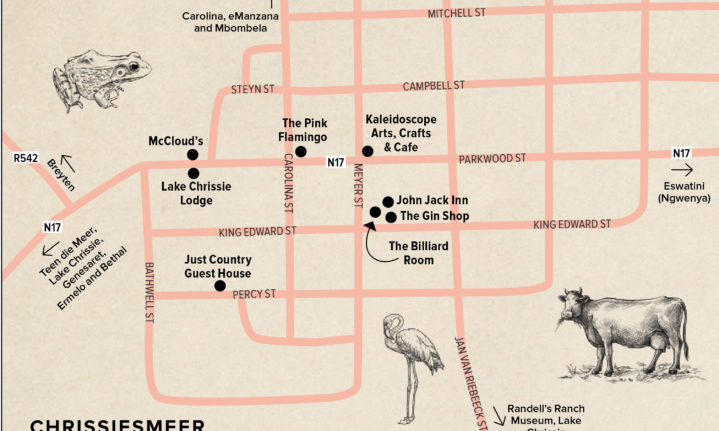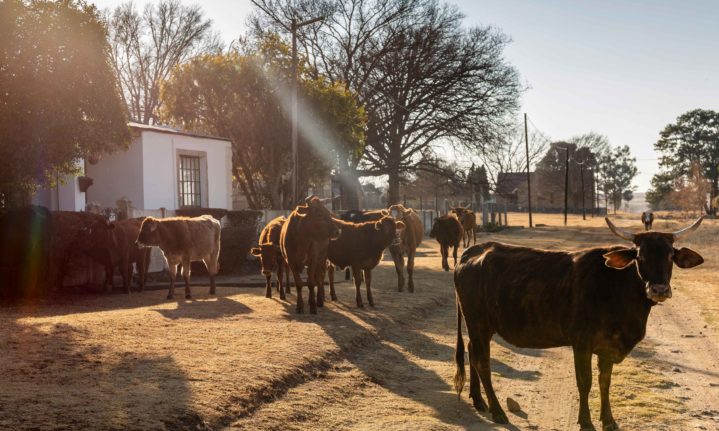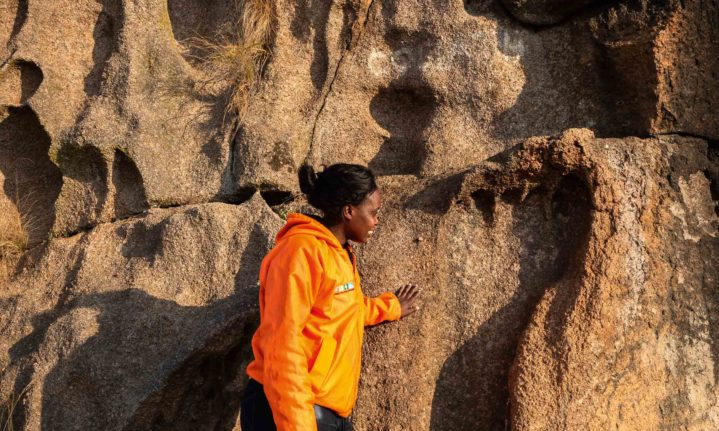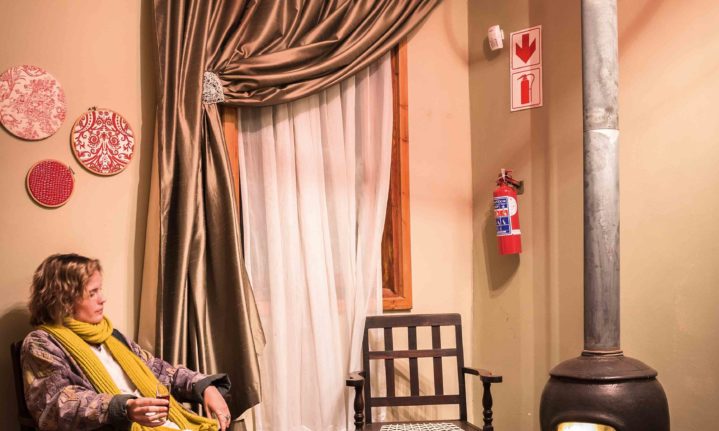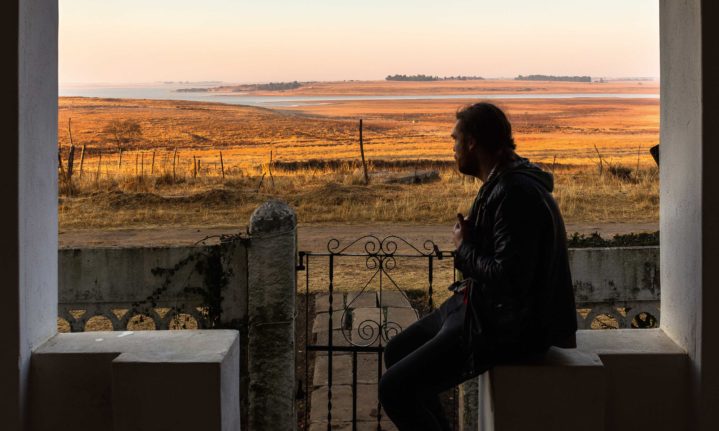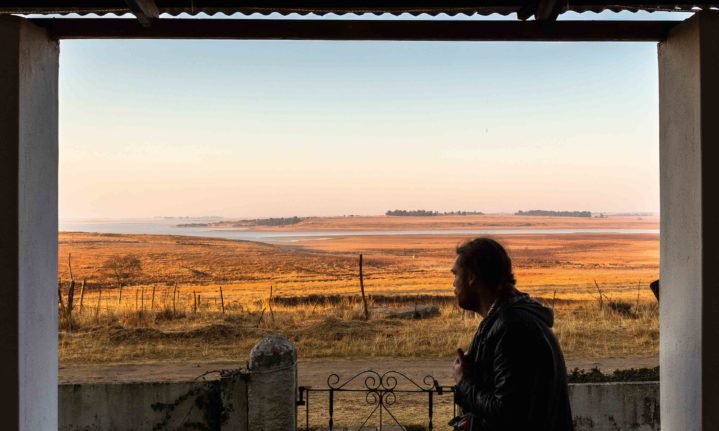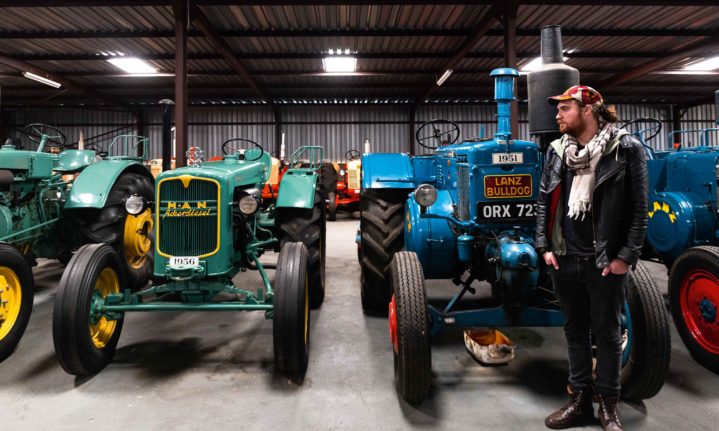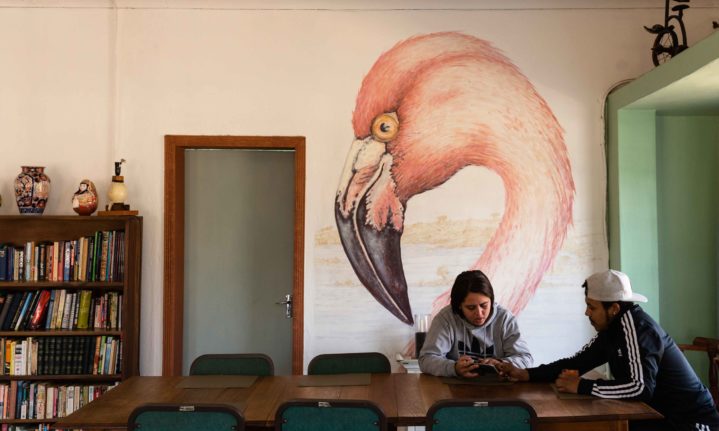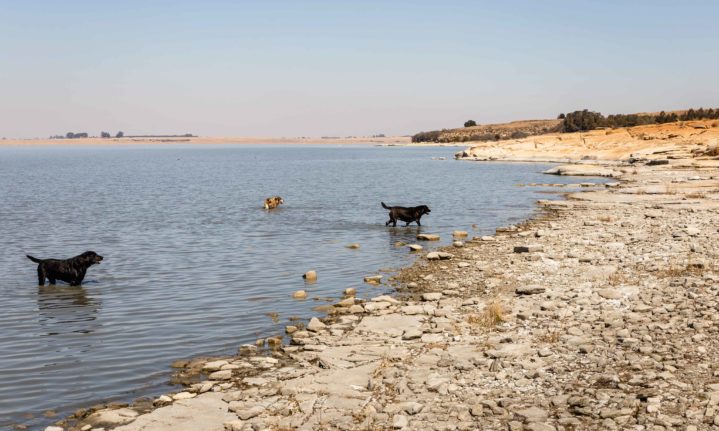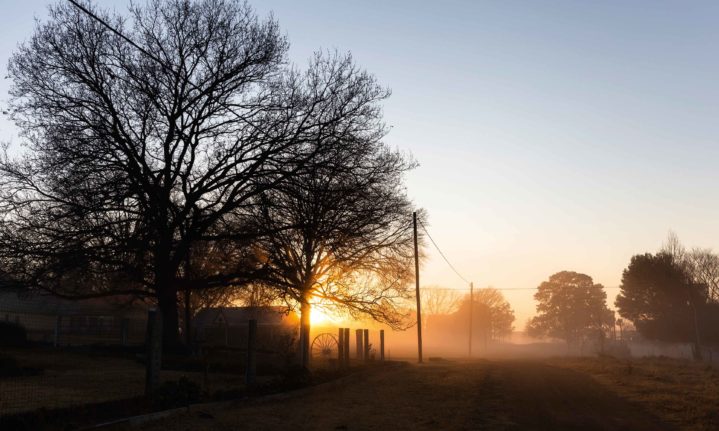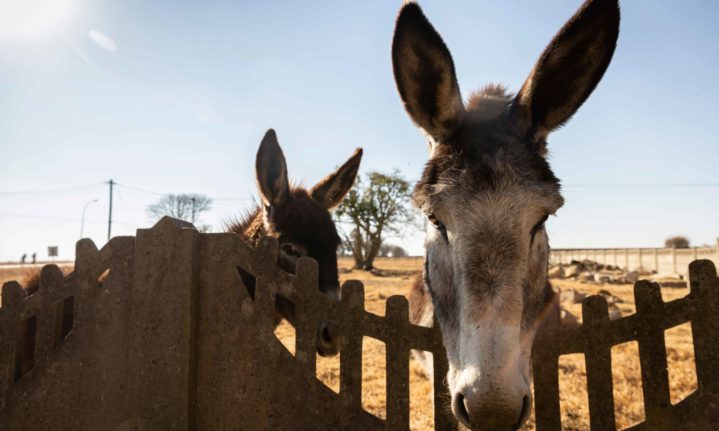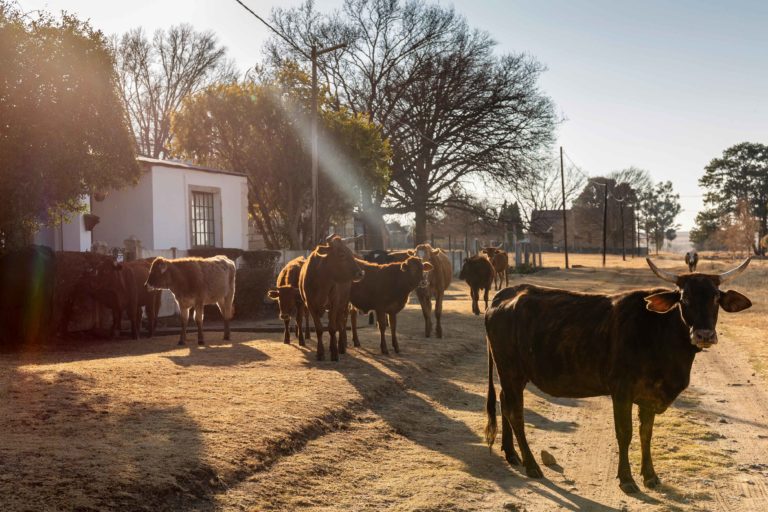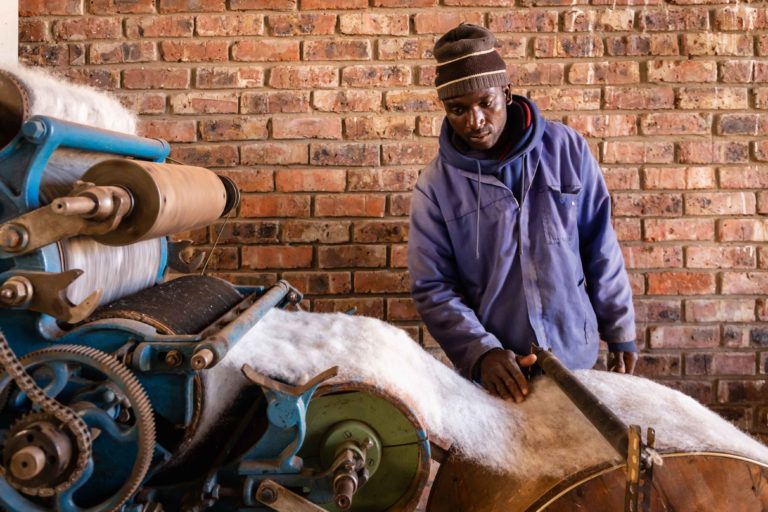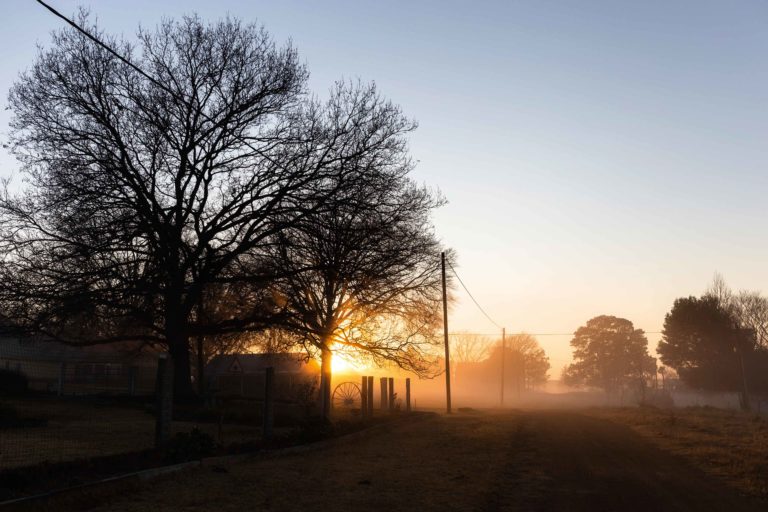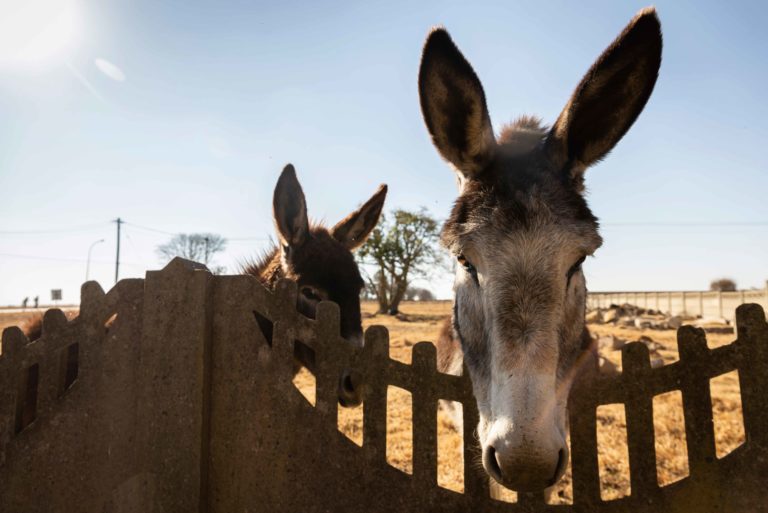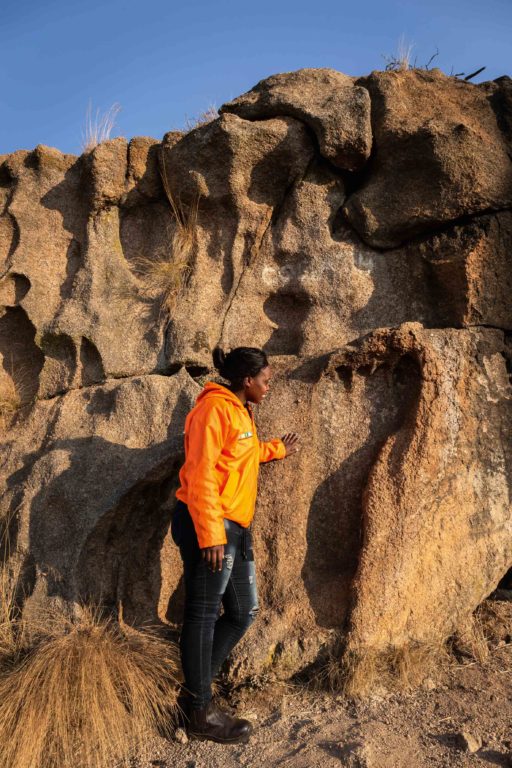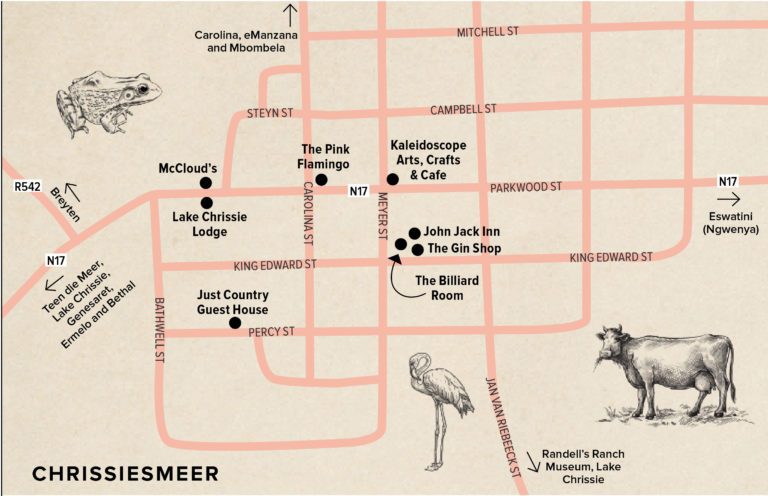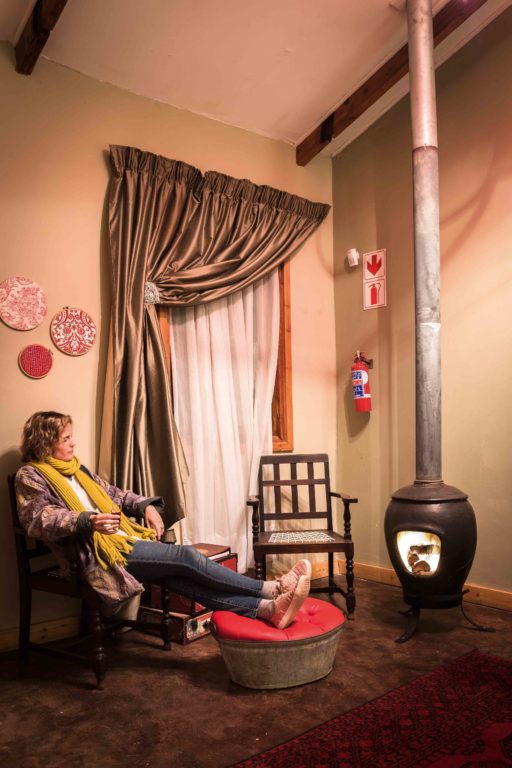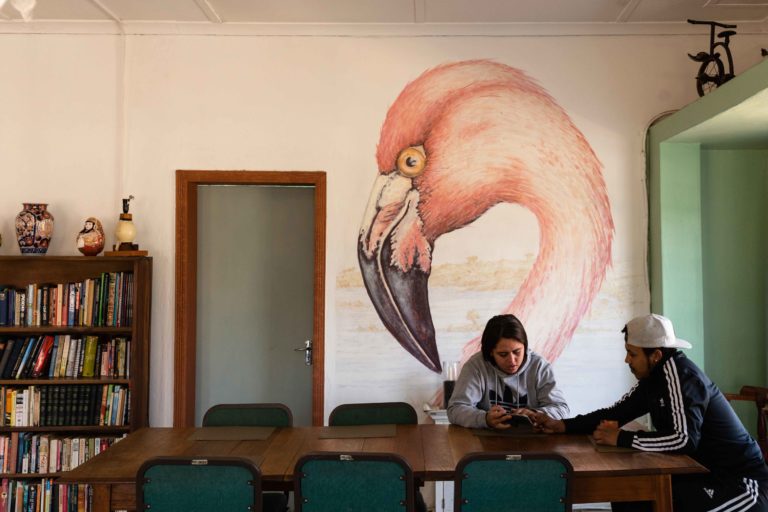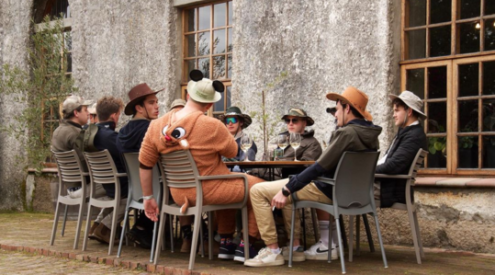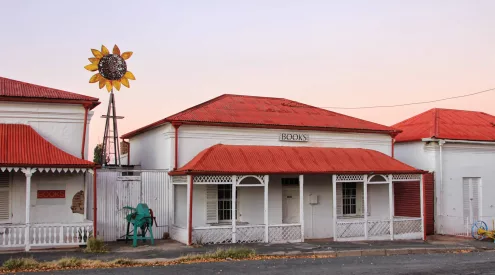With SA’s largest natural body of freshwater, and another 270 smaller pans in a 20-kilometre radius, it’s easy to see why this Mpumalanga dorpie markets itself as a ‘lake district’.
Words and photographs by Mia Louw
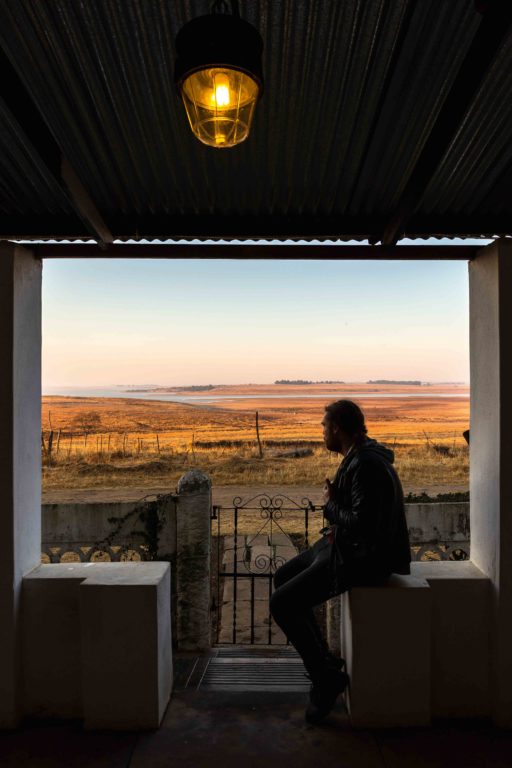
Hancu Louw enjoys his first coffee of the day on the stoep at Just Country Guest House, overlooking Lake Chrissie (nine kilometres long and 25 in circumference). Image: Mia Louw.
As I drove into Chrissiesmeer, those small-town jokes came to mind. You know… ‘This town is so small, the welcome and goodbye signs are on the same post.’ Or, ‘This town is so small, the jail is called amoeba – it only has one cell.’ Chrissiesmeer’s jail actually has two cells, part of a quirky guest house known as the Jail Bird.
Turning off Parkwood Street – the main road through town – on to one of the narrow gravel lanes, I was welcomed by platteland charm: cows, goats, pigs and a random rabbit roamed the streets, and light-blue views of Lake Chrissie could be glimpsed between old sandstone buildings.
Many of these are from the 1880s, after the area was established as the Republic of New Scotland. In 1866 Alexander McCorkindale convinced the government to sell off 200 farms to establish a settlement to service an access route to Mozambique.
The largest freshwater lake in South Africa was at that time known as Groot Zeekoepan. McCorkindale renamed it Miss Chrissie’s Lake, after President Pretorius’s daughter. Sadly, McCorkindale died six years later from malaria. The Scottish settlers felt lost without their wily businessman leader, and the settlement unravelled. A decade later, John Jack and August Simmer arrived and established a trading post with a hotel, stables and gin depot. In 1901 a recreation centre was added, with a huge billiard table for soldiers during the Anglo-Boer War. The wood-and-iron structure burnt down in 1936 but was rebuilt in 2012 to the original specs, and once again operates as an inn and distillery.
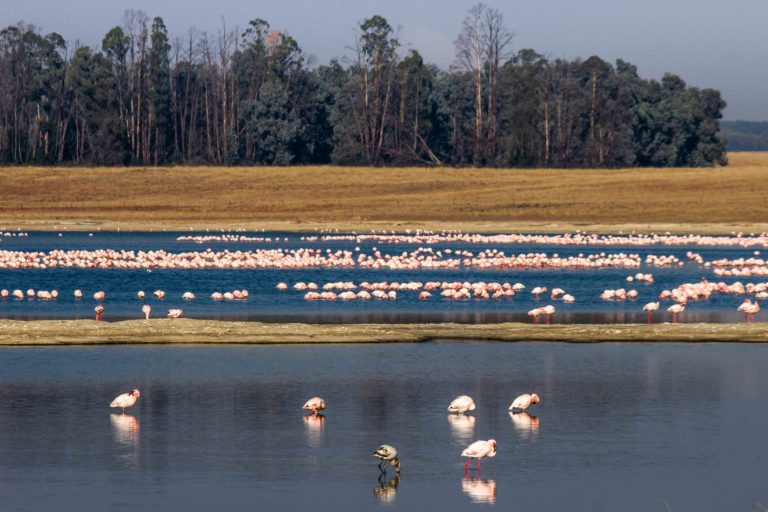
Lesser flamingos and other waders usually start arriving in spring and stay for summer. This was taken at Lake Banagher, one of the smaller pans on a nearby farm. Image: Mia Louw.
Chrissiesmeer has a rich history, but today it’s more famous for its abundant fauna and flora. Flowers, frogs and birds attract most of the visitors to these parts, but you need to time your trip right. ‘Why are you visiting in late winter?’ another surprised local asked for the umpteenth time. The summer rains ensure a fuller lake, green grasslands, flowers and frogs, but for bird viewing it depends on what you’re looking for.
Esbie Bezuidenhout was on a mission to show me the elusive crowned cranes that gather in the area from July. Esbie isn’t a bird guide; she farms with cattle and sheep, owns John Jack Inn and The Billiard Room restaurant, and is temporarily managing her daughter’s shop. This doesn’t stop her from showing visitors around, though.
We didn’t see any cranes during our morning drive around the smaller pans, but I was spoilt with a flamboyance of flamingos – hundreds of them – and two shy secretary birds. The first waders usually arrive from September. Back at the shop, McCloud’s Wool Duvets & Pillows (in the old mill-works), Esbie showed me a ‘consolation’ picture of the crowned cranes from a book in the reading nook. (You can also buy wool pyjamas and comfy-casual clothing here, and pretty pastel paintings by Anna Vosloo, often inspired by Chrissiemeer’s landscapes.)
Further down the road is Frog Coffee Shop, the outside decorated with a South African flag, enamelware and a brown bicycle with plants in the basket. If you’re looking for amphibians you’re in the right place. I met up with owner Ben Bezuidenhout and his daughter, Hester, over a cup of coffee and milk tart, to chat about the frogging safari in December.
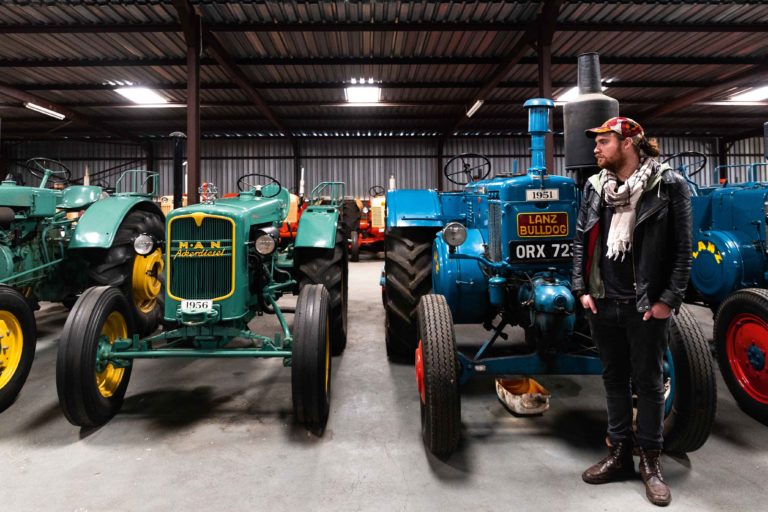
At the tractor museum, Hancu Louw admires a Lanz Bulldog, one of just 3 ,800 ever built. Image: Mia Louw.
This area is known as Matotoland, which means ‘land of the frogs’ in siSwati. Hester organises the Frog Night with Matotoland Eco-Tourism and The Pink Flamingo cafe. ‘Knowledgeable frogging guides take people out to the wetlands,’ she explained. ‘I know all 13 frog species in the area and also assist with guiding.’ Participants carefully catch the critters, ask the guides to identify them and then let them go.
As with Esbie, guiding isn’t really Hester’s job. She is a teacher at the primary school, but often takes visitors to nearby attractions. She also organises flower viewing in January. ‘I have 22 ground orchids and roughly 200 veld flowers on my list. We can definitely compete with Namaqualand – the flowers are only hiding in the grass,’ she said.
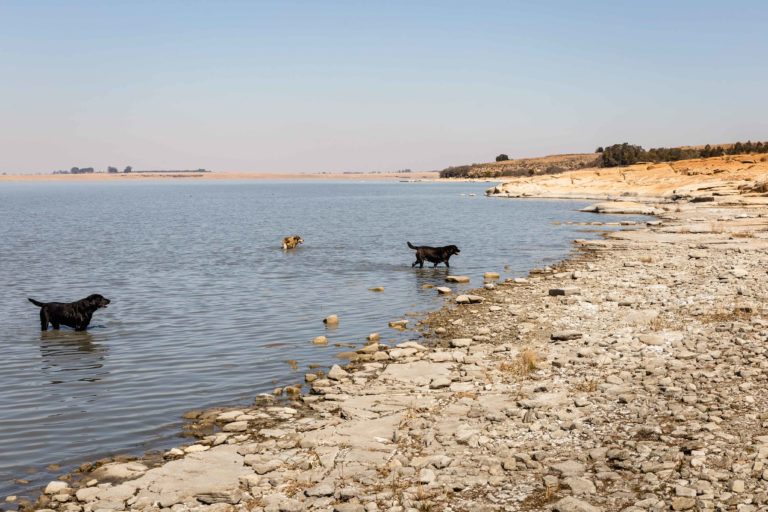
Esbie Bezuidenhout’s dogs enjoying a quick dip in Lake Chrissie. Esbie’s farm borders Genesaret campsite, one of the few places visitors can access the shoreline, as it allows day visitors. Image: Mia Louw.
Hester didn’t start the Frog Night, Ané Steinberg did back in 1998. She had been advised to ‘use what you have’ to boost local tourism. ‘The people in the area thought I’d lost the plot,’ she laughed. Later, when Ané started her current business, a guest farm and wedding venue, she handed over the frogging reins.
‘Our dorp is small enough for people to really get involved – with events, as well as to fix and maintain the town,’ Ané explained. She started an initiative on WhatsApp called the Daisy Group, which is used for organising clean-ups around the hamlet, and the group has grown considerably. ‘There is a wonderful synergy here,’ Ané smiles. ‘Everyone needs Chrissies, and Chrissies needs everyone.
Rock your world
Out of town but worth the drive
Goliath’s Footprint
In the Mpuluzi area, 56km from town, a 1,8m impression of a left footprint in granite rock (pictured above) has spiritual significance and many legends attached to it. Some say it is the footprint of God or Adam; others believe it belongs to e’Mpuluzi, a giantess who lived more than 100-million years ago. It’s said she died while running towards her lover as a volcano erupted, leaving her footprint behind in the molten rock.
Ti’Qwa San Rock Art
Towards eManzana (Badplaas), 40km from town, the San people left their story in a cave named Ti’Qwa, a San word describing the relationship between people and God. The rock paintings date back roughly 15 ,000 years; they show people and mythical figures, and depict the stalking tactics of a pride of lions. San still live in the area and meetings can be arranged through Highveld Heritage Tourism. 082-786-7959
The Natural Erosion Bridge
A rock arch leads over the Vaal River, 37km away on Goedehoop farm near Ermelo. At 27m long and 7m wide, this is the largest natural stone bridge in SA. Both Voortrekkers and Anglo-Boer War forces used the bridge to cross the Vaal. It’s on private property, but call Hester Bezuidenhout (079-080-3826) to arrange a visit on weekends. There is also a stone cottage to stay in, within walking distance of the bridge and overlooking a dam flowing into the river. R1 ,600 a night (sleeps six). 082-784-5248
TIP Tourism monitor Lungile Lusenga will take you to these three sites for R300* pp. 076-041-5374
Plan your trip
GETTING THERE
Chrissiesmeer is 247km east of Joburg on the N17 via Bethal and Ermelo. From Mbombela, it’s 175km via eManzana (Badplaas) and Carolina, or take the N4 to eNtokozweni (Machadodorp), then south to Carolina.
STAY HERE
Just Country Guest House is on the outskirts of town, and the main structure is 107 years old. It has five double rooms (sharing three showers and toilets), two lounges, an old country kitchen and big garden. The spacious stoep provides waterscape views at sunset. R475* pp. 082-824-3585. Find it on Facebook.
John Jack Inn has two oak trees in front that were planted back in 1886. The seven en-suite rooms (with ceramic fireplaces) encapsulate the romance and nostalgia of the past. R550* pp sharing B&B. 083-625-6097, johnjackinn.co.za
Teen Die Meer, 8km out of town, is one of the few places where the public can access the lake, and the campsite, safari tents and timber chalets are right next to the water. Mountain-biking routes weave through the farm; look out for dassies, mongooses and blesbok. R30* pp for day visitors. Chalets cost R550* (sleep four), campsites R60* pp (maximum six people). 082-629-4320, teendiemeer.com
DO THIS
Buy a custom guitar made by artist-musician-woodworker Peter Borradaile at Kaleidoscope Arts, Crafts & Cafe. His paintings are in the coffee shop, as well as sketches by Gerhard van den Bergh (check out the labyrinth he designed at the DR Church). Kaleidoscope does light meals and baked goods. Open daytime Wednesday to Sunday. 082-378-9488
Admire vintage tractors and more at Randell’s Ranch Museum, 32km out of town. Jan Randell has eight barns filled with tractors, cars, motorbikes, trucks, engines and church organs. The oldest tractor is from 1916, in a collection of 220. Open on Saturdays only. Entry R50* pp, booking essential. 082-807-5515
Sip on a hand-crafted tipple at The Gin Shop (the old gin depot from 1886). It sells more than 50 gins, as well as owner Marian Bezuidenhout’s own brand, Highveld Gin (R250* a bottle). She uses seasonal, local botanicals and distils three: porcini, chilli and spicy orange. A tasting of six gins costs R250*. Open 11am–10pm most days (until 5pm Sundays). 082-888-0262
Go frogging on Frog Night, 7 December, with guides and guest speakers. Species include the bubbling kassina and striped stream frog. R150* adults, R75* kids (includes a spitbraai and live music). 079-080-3826
See wildflowers, such as cat’s whiskers and chandelier lilies, carpeting the grasslands. Tours on 11 and 18 January 2020 cost R150* pp, including a light meal. 079-080-3826
EAT HERE
The Billiard Room is the former Anglo-Boer War rec hall (the cement blocks on which the legs of the billiard table rested can still be seen). The menu varies between burgers, steaks, pastas and pizzas (from R65–R85*). Open 11am– 8pm (until 3pm on Sundays; closed Mondays). 083-625-6097
Lake Chrissie Lodge is famous for its Sunday lunch buffet (12–4pm), with an overwhelming selection to savour: soup, nine salads, four meat options, five veg dishes and five desserts for R160* pp. There is also an à la carte menu, and it’s open for dinner daily until 8pm. 017-847-0025
The Pink Flamingo is a takeaway, bakery and cafe. The shop sells cooldrinks, sweets, snacks, second-hand books and gifts. Stop in for a creamy egg and mayo toasted sarmie with chips (R35*) or a dagwood (R85*) if your stomach is rumbling properly. Open all day (until 1pm on Sundays). 082-824-3585
*Prices subject to change
This article was first published in the November 2019 issue of Getaway magazine.
Get this issue →
All prices correct at publication, but are subject to change at each establishment’s discretion. Please check with them before booking or buying.










